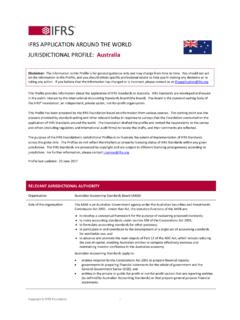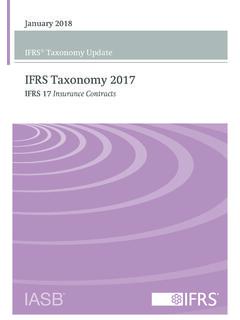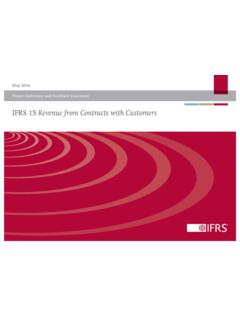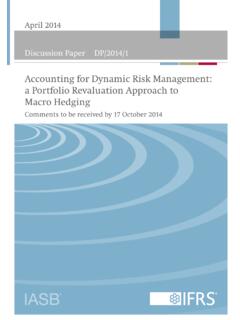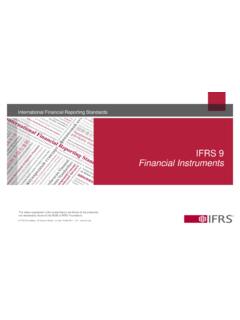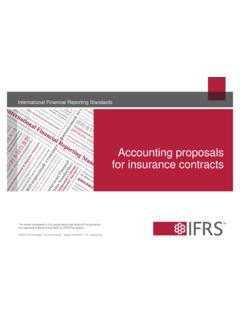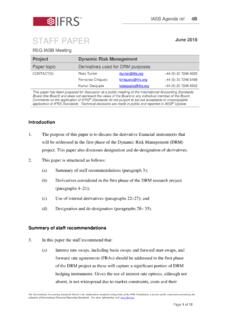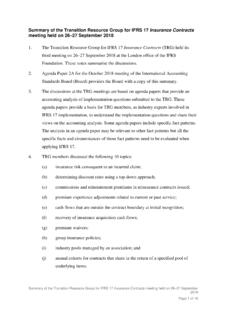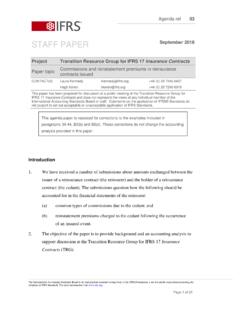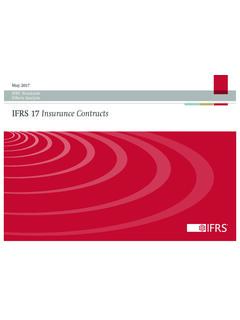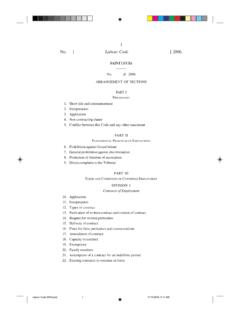Transcription of IFRS for SMEs Fact Sheet
1 January 2021 IFRS for SMEs Fact Sheet Good Financial Reporting Made Simple IFRS for SMEs Fact Sheet | January 2021 | 1 1. The IFRS for SMEs Standard (as amended 2015) The IFRS for SMEs Standard (as amended 2015): (a) is a stand-alone Standard; (b) is 250 pages in length, including accompanying guidance in non-mandatory appendices; (c) is based on principles from IFRS Standards with simplifications tailored to small and medium-sized entities (SMEs). Simplifications from full IFRS Standards are based on: (i) the needs of lenders, creditors and other users of SMEs financial statements who are primarily interested in information about cash flows, liquidity and solvency; and (ii) cost-benefit considerations.
2 (d) provides simplifications of IFRS Standards by: (i) omitting topics that are not relevant to entities eligible to apply the IFRS for SMEs Standard; (ii) removing some options available in IFRS Standards; (iii) simplifying recognition and measurement requirements; (iv) reducing disclosures; and (v) simplifying language. (e) can be accessed here. 2. First Comprehensive Review of the IFRS for SMEs Standard In May 2015, the International Accounting Standards Board (Board) completed its first comprehensive review of the IFRS for SMEs Standard.
3 After consulting widely and considering that the IFRS for SMEs Standard was still a relatively new Standard, the Board issued only limited amendments. These amendments were effective on 1 January 2017 with early application permitted. The most significant amendments relating to transactions commonly encountered by SMEs are: (a) permitting SMEs to revalue property, plant and equipment; (b) aligning the main recognition and measurement requirements for deferred income tax with full IFRS Standards; and (c) aligning the main recognition and measurement requirements for exploration and evaluation assets with IFRS 6 Exploration for and Evaluation of Mineral Resources.
4 IFRS for SMEs Fact Sheet | January 2021 | 2 (d) Other amendments included: (i) adding exemptions from the following requirements when application would cause undue cost or effort: measuring investments in equity instruments at fair value; recognising intangible assets separately in a business combination; offsetting income tax assets and liabilities; and measuring the liability to pay a non-cash dividend at the fair value of the assets to be distributed. Additional guidance has been included to clarify that an entity must carefully weigh the expected effects of applying the exemption on the users of its financial statements against the cost or effort of complying with the requirement.
5 An entity must also disclose its reasoning for using any of the undue cost or effort exemptions. (ii) the option to use the equity method for investments in subsidiaries, associates and jointly controlled entities in separate financial statements. (iii) the modification of the criteria for basic debt instruments to ensure most simple loans qualify for amortised cost measurement. (iv) the requirement that if the useful life of goodwill or another intangible asset cannot be established reliably, management s best estimate is used, but must not exceed 10 years.
6 (v) the requirement that investment property measured at cost less accumulated depreciation and impairment is presented separately on the face of the statement of financial position. More information on the first comprehensive review can be accessed here. 3. Second Comprehensive Review of the IFRS for SMEs Standard The second comprehensive review of the IFRS for SMEs Standard commenced October 2018 with the Emerging Economies Group discussing the possible scope of the review. In 2019, the Board commenced discussion on the second comprehensive review establishing the framework and the scope of the review.
7 IFRS for SMEs Fact Sheet | January 2021 | 3 The scope of the second comprehensive review includes: (a) IFRS Standards, amendments to IFRS Standards and IFRIC Interpretations issued since the first comprehensive review of the IFRS for SMEs Standard; (b) IFRS Standards and IFRIC Interpretations issued before the first comprehensive review, but that did not result in amendments to the IFRS for SMEs Standard; and (c) general implementation experience and issues arising from the application of the IFRS for SMEs Standard.
8 The Request for Information, published in January 2020, completed the first phase of the second comprehensive review: (a) the objective of the Request for Information was to seek views on whether and how aligning the IFRS for SMEs Standard with full IFRS Standards could better serve users of financial statements prepared applying the IFRS for SMEs Standard without causing undue cost and effort for SMEs. (b) the Board discussed in detail all the questions in the Request for Information. The way the questions were expressed indicated the Board s reasoning on important issues, for instance, on aligning or not aligning the IFRS for SMEs Standard with full IFRS Standards.
9 The Board did not, however, reach a preliminary view on any of these issues. (c) the agenda papers and summaries from the Board s discussions are publicly available on the IFRS Foundation s website. The Request for Information was set out in three parts: (a) Part A set out the framework the Board developed for approaching this review and asked for comments on the Board s approach. (b) Part B contained questions on Sections of the IFRS for SMEs Standard that could be aligned with IFRS Standards, amendments to IFRS Standards and IFRIC Interpretations in the scope of the review.
10 (c) Part C sought views on topics not addressed in the IFRS for SMEs Standard and on whether, in relation to these topics, the Standard could be aligned with IFRS Standards. It also asked about topics on which the Board has received feedback. The Request for Information was open for comment until 27 October 2020. The consultation feedback is available on the IFRS Foundation s website. The Board and SMEIG are considering the feedback on the Request for Information to assess the next step in the second comprehensive review of the IFRS for SMEs S tandard.
